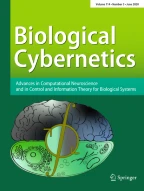Abstract.
We present a biologically plausible model of processing intrinsic to the basal ganglia based on the computational premise that action selection is a primary role of these central brain structures. By encoding the propensity for selecting a given action in a scalar value (the salience), it is shown that action selection may be re-cast in terms of signal selection. The generic properties of signal selection are defined and neural networks for this type of computation examined. A comparison between these networks and basal ganglia anatomy leads to a novel functional decomposition of the basal ganglia architecture into `selection' and `control' pathways. The former pathway performs the selection per se via a feedforward off-centre on-surround network. The control pathway regulates the action of the selection pathway to ensure its effective operation, and synergistically complements its dopaminergic modulation. The model contrasts with the prevailing functional segregation of basal ganglia into `direct' and `indirect' pathways.
Similar content being viewed by others
Author information
Authors and Affiliations
Additional information
Received: 16 February 2000 / Accepted in revised form: 30 October 2000
Rights and permissions
About this article
Cite this article
Gurney, K., Prescott, T. & Redgrave, P. A computational model of action selection in the basal ganglia. I. A new functional anatomy. Biol Cybern 84, 401–410 (2001). https://doi.org/10.1007/PL00007984
Issue Date:
DOI: https://doi.org/10.1007/PL00007984
